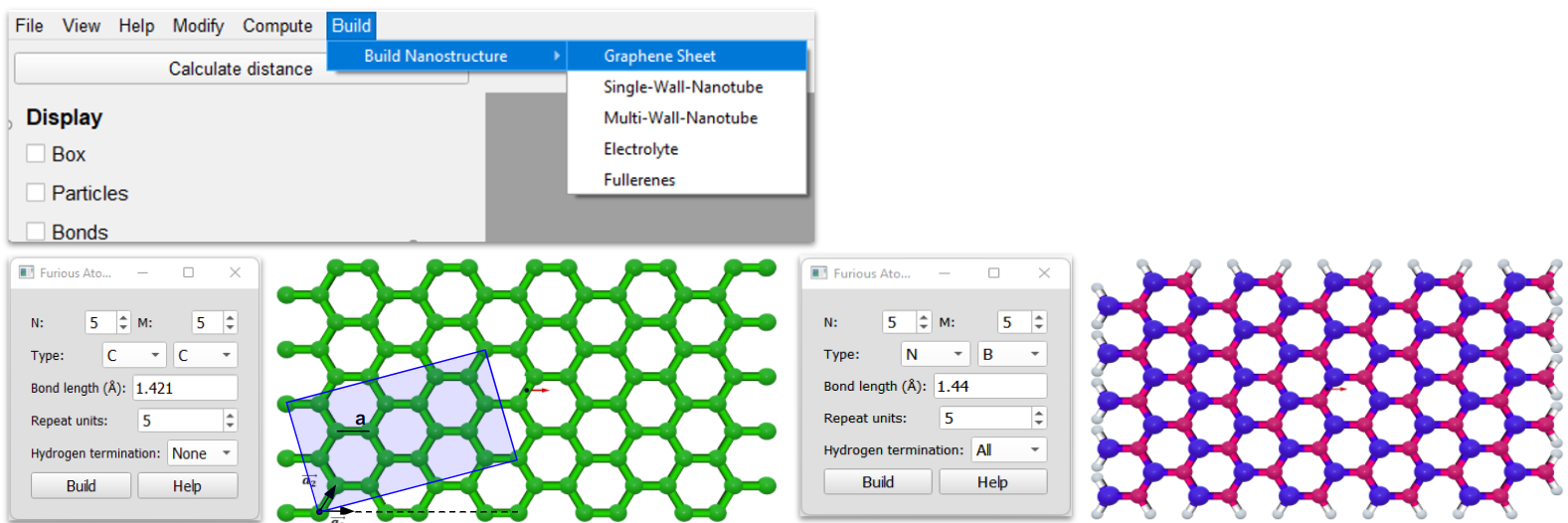Modeling Graphene!
Graphene Sheet feature allows construction of graphene and graphene-like sheets such as hexagonal boron nitride (h-BN), hexagonal boron phosphide (h-BP), hexagonal aluminum phosphonate (h-AlP) and hexagonal aluminum nitride (h-AlN). Graphene is made of a single atomic layer. On the graphene net, the chiral indices (n, m) specify the lattice structure. n and m are numerically positive integers and define the chiral vector ($\overrightarrow{C_{h}}$) as: \begin{equation} \overrightarrow{C_{h}}=(n, m)=n \overrightarrow{a_{1}}+m \overrightarrow{a_{2}} \end{equation} Where $\overrightarrow{a_{1}}$ and $\overrightarrow{a_{2}}$ are primitive lattice vectors in the hexagonal lattice of graphene separated with an inner angle of 60. $a$ is the bond length of c-c (the distance between nearest neighbors), the primitive lattice vectors can be chosen to be: \begin{equation} \vec{a}_{1}=\frac{a}{2}(3, \sqrt{3}), \vec{a}_{2}=\frac{a}{2}(3,-\sqrt{3}) \end{equation} Based on chiral indices (n and m), graphene can be further categorized into “armchair” when n=m, “zig-zag” when n > 0, m = 0, and all other integer combinations are called “chiral”. The default type of sheet structure is carbon-carbon (C-C) with bond length of 1.421 $\text { Å }$. The Graphene Sheet is located in the Build menu under "Build Nanostructures". The user can change the bond length of graphene and graphene-like sheets. In the “Hydrogen termination” option, the edges of the structure are terminated by hydrogen, if "All" is selected. As an example of the graphene builder widget and the hydrogenated hexagonal boron nitride structure generated by FA is shown here.
